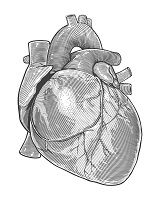Article
Study: Drug-Eluting Stents No Better than Bare Metal
Author(s):
Drug-eluting stents are falling far short of their promises of fewer complications, improved mortality and quality of life, a study found. In the largest study ever done comparing newer drug-eluting stents to bare metal devices, Norwegian researchers found the drug stents did not show a difference in these outcomes.

Drug-eluting stents appear to offer far less benefit to patients than was expected, a large study in Norway found.
In research presented today at the European Society of Cardiology’s ESC Congress 2016, Kaare Bonaa, MD, PhD, of the Norwegian University of Science and Technology, Trondheim, Norway, and colleagues reported on a trial called NORSTENT. The study was also published online today in the New England Journal of Medicine.
Patients with the drug-eluting stents “don’t live longer or live better,” Bonaa said in a news conference this morning..
In what Bonaa said was the largest stent trial ever conducted--and one that was not funded by the device industry--the team looked at results in 9,013 patients who were randomized to receive either the newer drug-eluting devices or bare metal stents.
It included patients with stable angina (2, 636) and patients with acute coronary syndromes (6,377) all of whom needed percutaneous coronary intervention (PCI).
“Norway uses drug-eluting stents, however the evidence of efficacy is not as strong as was thought,” Bonaa said. The current ESC guidelines as well as those of the European Association for Cardio-Thoracic Surgery claim the new stents offer “improved safety outcomes including death, myocardial infarction and stent thrombosis.”
Not so, Bonaa said. There was very little difference in outcomes between the pricier new stents and their bare metal predecessors..
In a US National Institutes of Health study in 2011, researchers found the price of the drug eluting stents was about $1,846 higher per patient, but justified because the drug devices had a lower rate of patients needing revascularization, 15% vs. 24% for the bare metal devices.
The NORSTENT study found a far smaller difference.
The patients who got the drug stents were only slightly less likely (3%) to need revascularization procedures.
Stent thrombosis was” only borderline better” with the drug devices.
Will the study change clinical practice?
“I think it might increase the use of bare metal stents,” Bonaa said, answering questions at a news conference. “Some patients might benefit [from bare metal] if they have a tendency for bleeding, and those who can’t use dual anti-platelet therapy might benefit.”
The study was conducted from 2008 to 2011. The drug-eluting stents were newer ones, 83% of patients receiving everolimus-eluting stents and 12% receiving zotarolimus-eluting stents.
At six years of follow-up, there was no significant difference in mortality or myocardial infarction between the groups that got drug-eluting stents and bare metal stents. Nor were there differences in rates of unstable angina or quality of life.
The study did not include a cost-benefit analysis.
The study was underwritten by non-profit organizations and institutions including the Norwegian Research Council.
“This will create a lot of discussion, said Andreas Baumbach, the ESC’s president-elect and a cardiologist in Bristol, UK, “We will have to think about this trial.”





